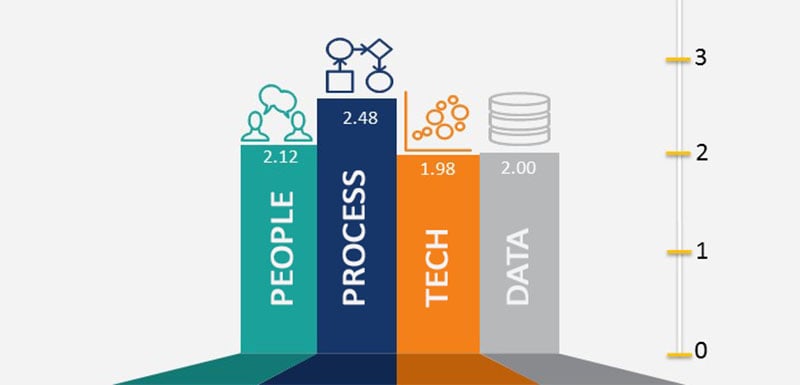
The title of this post was first attributed to W. Edwards Deming during the last year of his remarkable life in 1993. Deming was widely known as one of the founders of total quality management (TQM) methods behind the radical improvements in quality and productivity in post WWII Japan that have since been widely emulated in modern organizations worldwide.
This quote is every bit as true within analytics as it is in manufacturing. I’ve been fortunate enough to get an inside look at how companies capture, analyze, and act upon data in my years as a strategic analytics consultant. Inevitably, when consultants like myself are called in to address technology challenges, in many instances, a spotlight is shone on the real issues derailing the organization’s ability to capitalize on their information assets: Process.
I was reminded of this during an executive analytics event my company held just last month in Tampa, FL. We hosted executives spanning Catalina, Triad, Equifax, PSCU, Franklin Templeton, Rooms To Go, and a half dozen others from various industries, discussing challenges and opportunities they all face in the analytics space. When asked which category across either 1) people, 2) process, 3) technology and 4) data holds them back from realizing their vision for analytics, “process” was the clear winner, or I suppose loser, in the case of this poll:

One of the interesting nuggets in the dialog that followed was that while “analytics,” which focuses on predicting what can happen through data discovery, requires a level of expertise that is more advanced than traditional “BI” reporting, BI is far more difficult to institute within an organization due to its enterprise nature.
BI is hard, and there are many factors that go into maintaining a well-oiled enterprise machine. 3Cloud developed a recommended method for defining a BI strategy, called an AVR, which stands for Assessment, Vision, and Roadmap. Across the many AVR engagements we’ve done, I’ve pulled out a few common areas of focus that all organizations should assess to ensure they have the proper processes in place for supporting BI before implementing a solution.
Four Areas of Focus when Assessing Processes for BI:
- Data Remediation – What processes do your end-users follow when a question arises around wrong or missing data? Many organizations leave such troubleshooting to BI development or data science staff, ensuring that every issue interrupts the development cadence. Consider implementing a ticketed process for managing workflows.
- Data Governance – Where do your end-users go for definitions around how measures are calculated, where they are sourced, who the subject matter experts are? One recent engagement revealed that all such information was found within a company wiki. Does your organization use consistent terminology that is known to all users?
- Business Reviews – Nearly every client we have worked with leveraged BI for some form of executive readout out of client activities. Dig into exactly what software, in what sequence, against what data is needed to produce such a report. On average, we see 6 or more applications involved, spanning several weeks. BI use cases such as these are often overlooked in planning initiatives. Be sure to assess all your necessary use cases and define processes that support them prior to implementation.
- Bi-modal – With who, and how, do you equip your organization to perform exploratory or ad hoc analytics? Most modern organizations have already deployed some form of self-service analytics; however without the proper process in place to support ongoing ad-hoc analysis, and self-service can quickly become no-service.
Spending a few weeks at the beginning of your BI implementation and really digging into four key areas will bear tremendous fruit in allowing you to determine the prioritization of activities for your next years’ worth of investments in analytics. And if you fall short in most of these areas, it is a leading indicator that a lack of institutional control, or a business intelligence competency center, is holding you back from realizing your analytics investment.




